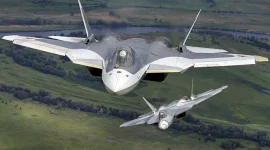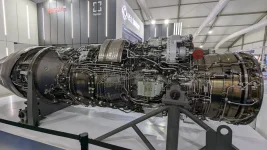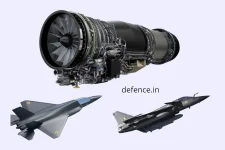- Views: 3K
- Replies: 41

The international conversation surrounding 5th generation fighter jets has resurfaced discussions regarding India's options to strengthen its air force, particularly in light of reports that Pakistan is acquiring the J-35A.
Amidst this discourse, one fact remains clear: India's domestically developed Advanced Medium Combat Aircraft (AMCA) is not merely a necessity, but the only practical choice for a true 5th generation fighter.
Several factors contribute to this conclusion. Firstly, foreign fighters marketed as 5th generation often fail to meet the stringent requirements of such a designation.
Russia's Su-57 Felon, for example, suffers from compromised stealth capabilities due to exposed engine compressor blades. This design flaw significantly increases its radar cross-section (RCS), making it far less stealthy than advertised and falling short of the low observability standards expected of a true 5th generation aircraft.
Furthermore, incorporating the Su-57 into the Indian Air Force (IAF) would present logistical and compatibility challenges, as the IAF is transitioning towards systems that prioritize interoperability and indigenous platforms.
While the US F-35 is undeniably a technological marvel, it presents an unrealistic option for India. The US maintains strict export controls, particularly for advanced defence technologies. Even if offered, existing delays in F-35 deliveries to NATO allies suggest that timely acquisition by India is improbable.
Similarly, relying on nations with conflicting geopolitical interests is not a viable strategy for India. Turkey's indigenous 5th generation program (TF-X) is years away from completion, and China's offerings, such as the J-20, are out of the question.
South Korea's KF-21 Boramae, while an interesting development, currently remains a 4.5 generation fighter. Though promising, it is still in the testing phase and lacks operational readiness. Relying on the KF-21 for India's immediate defence needs would be akin to gambling on an unfinished project with uncertain outcomes.
In contrast, India's AMCA project is specifically designed to fulfill the IAF's requirements while ensuring self-reliance in defence technology. With its inaugural flight anticipated in the early 2028s, the AMCA offers several advantages.
It is tailored to India's specific operational needs and integrates seamlessly with existing and planned IAF infrastructure. Furthermore, the AMCA program strengthens India's domestic aerospace industry, fostering technological expertise and reducing reliance on foreign suppliers.
While Pakistan's acquisition of the J-35A – a naval variant of China's FC-31 Gyrfalcon – is noteworthy, it does not fundamentally alter the strategic landscape. The J-35A's true 5th generation capabilities remain questionable, as it is yet to be proven in real combat scenarios.
India's emphasis on quality over hasty acquisitions ensures a long-term strategic advantage. With meticulous planning and sustained investment, the AMCA will guarantee India remains at the forefront of aerial dominance.




